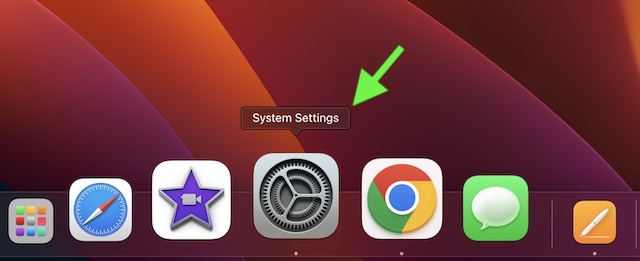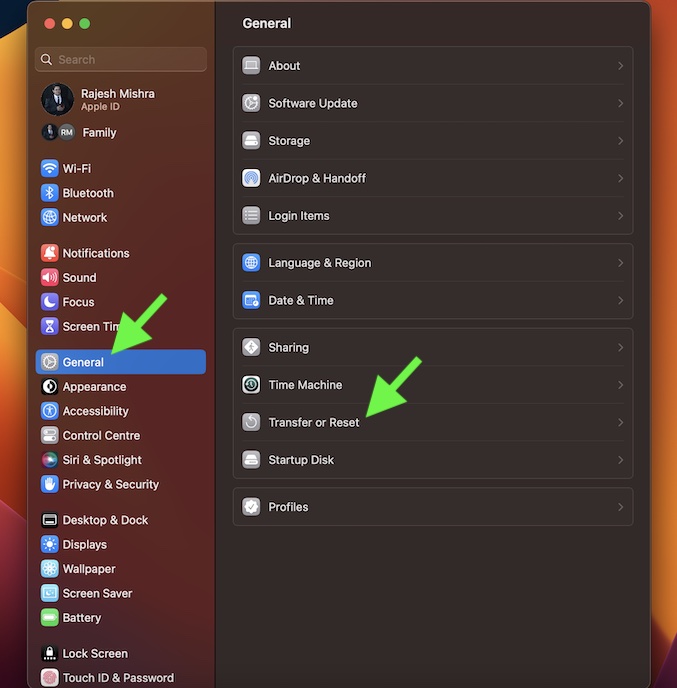Erase All Content and Settings on Mac Running macOS 13 Ventura or Later
With macOS 13, Apple has resigned the System Preferences app. For a change, it is now called “System Settings” and sports an iOS/iPadOS-like interface. Thanks to the revamped design, the Settings app feels very intuitive and snappier. However, due to the complete overhaul, settings for a number of features like the ability to enable fast user-switching, check Mac’s storage and erase all content have changed. Though the steps are still pretty straightforward, many users may get confused. Especially those who are coming from Windows or Linux. But bother not, this is where we have a role to play.
- On your Mac running macOS 13 or later, open the System Settings app. Or, you can just click on the Apple menu at the top left corner of the screen and choose System Settings in the contextual menu.
- Now, click on General.
- Next, click on Transfer or Reset.
- Finally, click on Erase All Content and Settings and confirm the action. And that’s about it!
Can’t Erase All Content and Settings on Your Mac?
If you don’t see the “Erase All Content and Settings” option on your Mac, make sure you have the supported Mac. Yeah, you read that right! The Erase All Content and Settings feature is available only on the Macs with Apple silicon and the Macs with the Apple T2 Security Chip. Therefore, make sure your device is onboard.
Following Intel Macs have the T2 security chip:
MacBook Air from 2018 MacBook Pro from 2018 Mac mini from 2018 iMac 27-inch from 2020 iMac Pro Mac Pro from 2019
Here is the list of Mac computers with Apple silicon:
MacBook Air (M2, 2022) MacBook Pro (13-inch, M2, 2022) Mac Studio (2022) MacBook Pro (14-inch, 2021) MacBook Pro (16-inch, 2021) iMac (24-inch, M1, 2021) Mac mini (M1, 2020) MacBook Air (M1, 2020)
Securely Erase Your Mac With Apple Silicon or Apple T2 Security Chip
So, that’s how you can wipe out your Mac. Without an iota of doubt, Apple silicon is far more efficient and powerful than Intel chips. Though initially, I was not sure how well Apple Silicon will perform in the long run and whether or not, it will live up to the expectation. But, now I’m extremely pleased with it. And I guess, it’s almost the same story with most users who have been using Apple silicon chips. What do you have to say about Apple’s custom chip for Mac and the sort of performance it is able to deliver? More importantly, has it been able to live up to your expectation? Make sure to shoot your thoughts via the comments section below. You may also like to catch up with:
How to Transfer FaceTime Calls Between iPhone, iPad, and MacHow to Enable/Disable Continuity Camera Webcam in iOS 16 on iPhone20 Best Tips to Customize iPhone Lock Screen in iOS 16 Like a Pro


